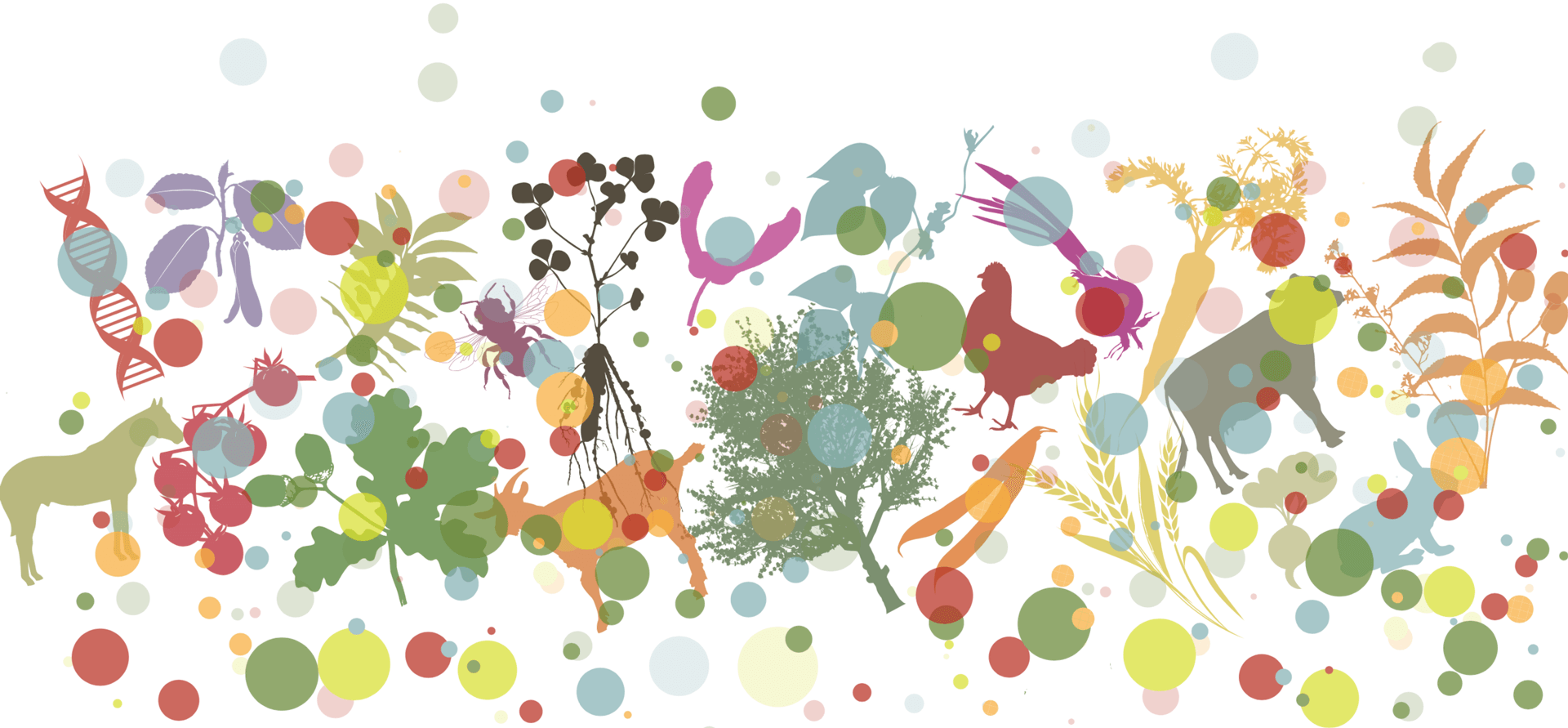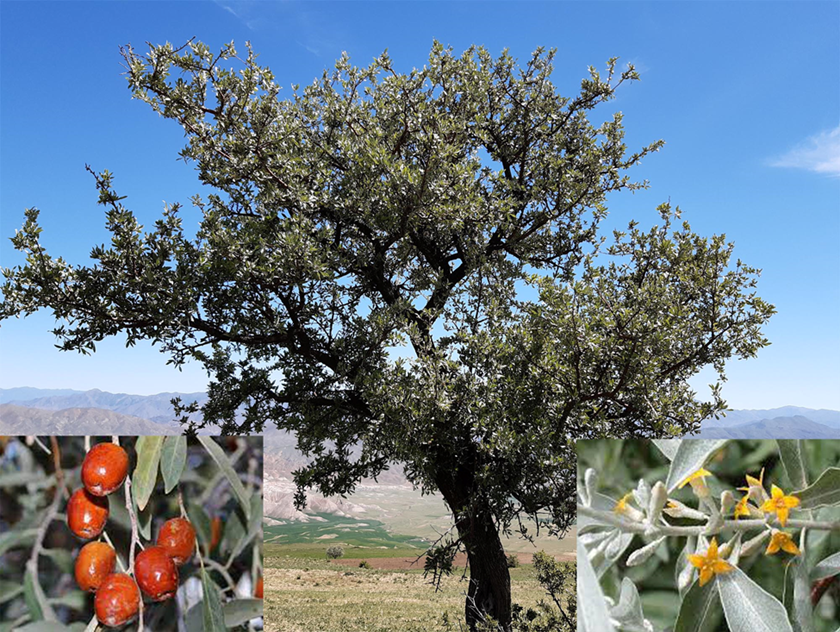The first draft genome sequence of Russian olive (Elaeagnus angustifolia L.) in Iran
Main Article Content
Abstract
Russian olive (Elaeagnus angustifolia L.) is a native tree species of Iran and the Caucasus region growing in both wild habitats and cultivated settings. The area under cultivation of this tree has been increasing in recent years due to its ability to withstand drought and soil salinity. Revealing the complete genome of this tree holds great importance. To achieve this, a local cultivar of Russian olive was sampled from the northwest region of Iran for whole genome sequencing using the Illumina platform resulting in approximately 6GB of raw data. A quality check of the raw data indicated that approximately 45,011,388 read pairs were obtained from sequences totalling around 6.7×109bp with CG content of 31%. To assemble the genome of the Russian olive tree, the raw data was aligned to a reference sequence of the jujube (Ziziphus jujuba) genome, which is the taxonomically closest plant to the Russian olive. Assembly of alignments yielded a genome size of 553,696,299bp consisting of 339,701 contigs. The N50 value was 5,300 with an L50 value of 24,921 and GC content of the Russian olive genome was 31.5%. This research represents the first report on the genome of the Iranian cultivar of the Russian olive tree.
Article Details

This work is licensed under a Creative Commons Attribution 4.0 International License.
Authors retain copyright of the articles published in Genetic Resources and grant the journal right of first publication with open access. All articles published in Genetic Resource are licensed under Creative Commons Attribution 4.0 International License (CC BY 4.0) that allows others to download, share and adapt the work for commercial and non-commercial purposes as long as proper attribution to the original article is given. Genetic Resources permits and encourages authors to post items submitted to the journal (including the publisher's final layout) on personal websites or institutional repositories after acceptance and/or publication, while providing bibliographic details that credit their publication in Genetic Resources.
Asadiar, L S, F Rahmani, and A Siami (2013). “Assessment of genetic diversity in the Russian olive (Elaeagnus angustifolia) based on ISSR genetic markers”. Revista Ciencia Agronomica 44(2), pp. 310–316. DOI: https://doi.org/10.1590/S1806-66902013000200013.
Brown, J, M Pirrung, and L A Mccue (2017). “FQC dashboard: Integrates FastQC results into a web-based, interactive, and extensible FASTQ quality control tool”. Bioinformatics 33(19), pp. 3137–3139. DOI: https://doi.org/10.1093/bioinformatics/btx373.
Fu, L et al. (2012). “CD-HIT: Accelerated for clustering the next-generation sequencing data”. Bioinformatics 28(23), pp. 3150–3152. DOI: https://doi.org/10.1093/bioinformatics/bts565.
Huang, Z et al. (2010). “Distribution and interspecific correlation of root biomass density in an arid Elaeagnus angustifolia - Achnatherum splendens community”. Acta Ecologica Sinica 30(1), pp. 45–49. DOI: https://doi.org/10.1016/j.chnaes.2009.12.008.
Jones, P et al. (2014). “InterProScan 5: genome-scale protein function classification”. Bioinformatics 30(9), pp. 1236–1240. DOI: https://doi.org/10.1093/bioinformatics/btu031.
Kanehisa, M et al. (2016). “KEGG as a reference resource for gene and protein annotation”. Nucleic acids research 44, pp. 457–462. DOI: https://doi.org/10.1093/nar/gkv1070.
Lamers, J P and A Khamzina (2010). “Seasonal quality profile and production of foliage from trees grown on on degraded cropland in arid Uzbekistan, Central Asia”. Journal of Animal Physiology and Animal Nutrition 94, pp. 77–85. DOI: https://doi.org/10.1111/j.1439-0396.2009.00983.x.
Langmead, B and S L Salzberg (2012). “Fast gapped-read alignment with Bowtie. 2”. Nature Methods 9, pp. 357–359. DOI: https://doi.org/10.1038/nmeth.1923.
Mineau, M M et al. (2012). “An invasive riparian tree reduces stream ecosystem efficiency via a recalcitrant organic matter subsidy”. Ecology 93(7), pp. 1501–1508. DOI: https://doi.org/10.1890/11-1700.1.
Mozaffarian, V (2009). Trees and shrubs of Iran. 2nd. Iran Farhang Pree, p. 1054.
Murray, M G and W F Thompson (1980). “Rapid isolation of high molecular weight plant DNA”. Nucleic Acids Research 8(19), pp. 4321–4326. DOI: https://doi.org/10.1093/nar/8.19.4321.
Necci, M et al. (2017). “MobiDB-lite: fast and highly specific consensus prediction of intrinsic disorder in proteins”. Bioinformatics 33(9), pp. 1402–1404. DOI: https://doi.org/10.1093/bioinformatics/btx015.
Nurk, S et al. (2017). “metaSPAdes: a new versatile metagenomic assembler”. Genome Research 27, pp. 824–834. DOI: https://doi.org/10.1101/gr.213959.116.
Tabatabaei, M (2010). Senjed = Elaeagnus angustifolia L. (Elaeagnaceae). Tehran, Iran: SANA Publication, p. 92.
Wang, Y et al. (2013). “Four flavonoid glycosides from the pulps of Elaeagnus angustifolia and their antioxidant activities”. Advanced Materials Research 756, pp. 16–20. DOI: https://doi.org/10.2991/iccia.2012.415.
Yang, M et al. (2023). “Insights into the evolution and spatial chromosome architecture of jujube from an updated gapless genome assembly”. Plant Community 4(6), p. 100662. DOI: https://doi.org/10.1016/j.xplc.2023.100662.
Zhu, W, A Lomsadze, and M Borodovsky (2010). “Ab initio gene identification in metagenomic sequences”. Nucleic Acids Research 38(12), e132. DOI: https://doi.org/10.1093/nar/gkq275.







 This journal has been conceived as part of the
This journal has been conceived as part of the